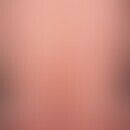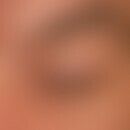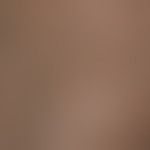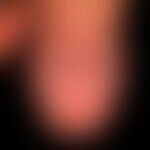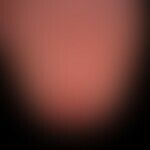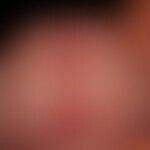Synonym(s)
HistoryThis section has been translated automatically.
Pinkus 1897-1907
DefinitionThis section has been translated automatically.
Chronic, asymptomatic, small-papular dermatosis with disseminated skin-colored or whitish, lichenoid papules about 0.1-0.3 cm in size with an initial lichenoid, later tuberculoid, dermal infiltrate.
No confirmed involvement of internal organs. An association of lichen nitidus and Crohn's disease is not confirmed (Stolze I et al. 2018).
A Köbner phenomenon can be observed.
In dark skin, the papules appear hypopigmented.
You might also be interested in
EtiopathogenesisThis section has been translated automatically.
Unresolved, discussed are: atypical course of lichen planus (rather unlikely), miliary form of granuloma anulare or sui generis disease. Drug-induced cases of lichen nitidus have been documented in individual cases (ribavirin, tremelimumab), but are likely to be the exception.
ManifestationThis section has been translated automatically.
Predominantly occurring in children of pre-school and school age, less frequently in young adults or in middle age (20-40 years). Familial occurrence is extremely rare.
An increased occurrence in the African population is being discussed.
No gender preference.
LocalizationThis section has been translated automatically.
Bending surfaces of the forearms, neck, chest, back, back of the hands, penis, vulva.
A variant described as"actinic lichen nitidus" occurs mainly in the facial region.
Nail dystrophies are described in about 10% of patients.
Oral mucosal involvement in the form of pale, gray papules is possible but rare.
Palmo-plantar involvement is equally rare.
ClinicThis section has been translated automatically.
Disseminated, also grouped, reddish-brownish on light skin, whitish on dark skin, barely 0.1 cm in size, slightly raised, pearly, centrally occasionally bifurcated, nonpruritic round or polygonal (not follicular) papules. Confluence occurs but is rare. An isomorphic irritant effect (Köbner phenomenon) has been demonstrated. On dark skin, the efflorescences appear lighter than the surrounding area, resulting in an inverse pattern (see Fig.).
A casuistically documented rarity is linear (blaschcoid) lichen nitidus (Oiso N et al. 2016).
Equally rare are lesional vesicles or hemorrhages.
Furthermore, a perforating variant has been described as a rarity .
Nail dystrophies are detectable: thickening of the nail plate, onychorrhexis; longitudinal striations, pitting.
HistologyThis section has been translated automatically.
Early stage: Interface dermatitis extending over multiple dermal papillae. Interstitial or even perivascular accentuated lymphocytic infiltrate with varying degrees of epidermotropy. Usually only discrete vacuolated degeneration of basal keratinocytes. Atrophy of the lesional epithelium. The keratinization is mostly orthokeratotic. Overall, little specific picture.
Late stage: Increasing density of epithelioid cells, plasma cells and multinucleated giant cells of Langerhans cell type (not to be confused with Langerhans cells which are resident histiocytes). This presents with a granulomatous character.
Differential diagnosisThis section has been translated automatically.
TherapyThis section has been translated automatically.
Informing the patient about the harmlessness of the findings. Blande nursing local therapy. In case of pronounced therapy desire and itching, local treatment with glucocorticoid creams and ointments such as 0.1% betamethasone (Betagalen, Betnesol) under occlusion.
Evidence-based studies are not available for the LN. PUVA therapy can be used for extensive clinical pictures.
Retinoids such as acitretin (neotigasone 10-20 mg/day p.o.) may be used on an experimental basis; there are anecdotal reports of this.
Individual healing attempts were made with tuberculostatics.
Progression/forecastThis section has been translated automatically.
Sporadic occurrence, chronic course lasting for years. Cure after several years without atrophy is possible.
A variant is lichen nitidus actinicus, also called"summertime actinic lichenoid eruption", which occurs after UV provocation. Predominantly affected are individuals with dark skin type (Payette MJ et al. 2015).
LiteratureThis section has been translated automatically.
- Arizaga AT et al (2002) Generalized lichen nitidus. Clin Exp Dermatol 27: 115-117
- Bedi TR (1978) Summertime actinic lichenoid eruption. Dermatologica 157:115-125
- Gehring W et al (1989) Lichen nitidus of the palms. Act Dermatol 15: 312-314
- Kubota Y et al. (2002) Generalized lichen nitidus successfully treated with an antituberculous agent. Br J Dermatol 146: 1081-1083
- Oiso N et al (2016) Blaschcolinear lichen nitidus. Eur J Dermatol 26:100-101.
- Payette MJ et al. (2015) Lichen planus and other lichenoid dermatoses: Kids are not just little people. Clin Dermatol 33:631-643.
- Pinkus F (1907) On a nodular skin eruption. Arch Dermatol Syphilol 85: 11-36
- Rudd ME et al (2003) An unusual variant of lichen nitidus. Clin Exp Dermatol 28: 100-102
- Sanders S et al (2002) Periappendageal lichen nitidus: report of a case. J Cutan Pathol 29: 125-128
- Solano-López G et al. (2014) Actinic lichen nitidus in a Caucasian European patient. J Eur Acad Dermatol Venereol 28:1403-1404
- Stolze I et al (2018) Lichen nitidus and lichen striatus. Dermatology 69: 121-126
- Tay EYet al. (2014) Lichen Nitidus Presenting with Nail Changes - Case Report and Review of the Literature. Pediatr Dermatol 32: 386-388
Incoming links (10)
Blue syndrome; Granuloma nitidum; Interface dermatitis; Koebner phenomenon; Lichen nitidus actinicus; Papulosa juvenilis dermatitis; Pinkus disease; Pinkus, felix; Porokeratosis punctata; Verrucae planae juveniles;Outgoing links (16)
Acitretin; Cream; Crohn disease, skin alterations; Granuloma anulare classic type; Hyperkeratosis follicularis caused by avitaminosis c; Interface dermatitis; Koebner phenomenon; Lichen nitidus actinicus; Lichenoid tuberculid; Lichen planus classic type; ... Show allDisclaimer
Please ask your physician for a reliable diagnosis. This website is only meant as a reference.

